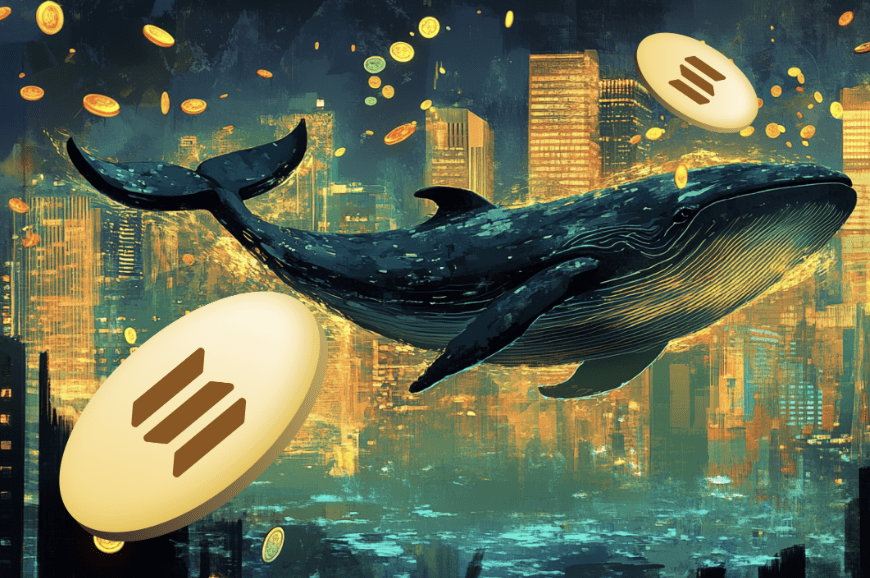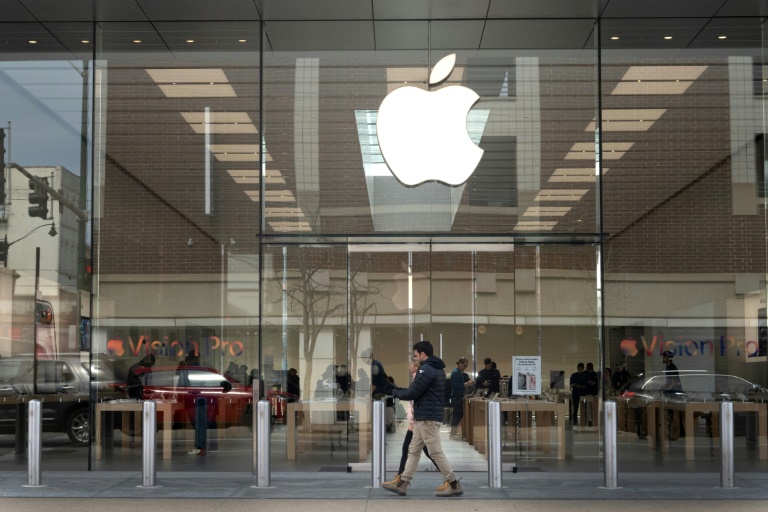In late September, Dominik “Domtendo” Neumayer received a troubling email. He had just featured The Legend of Zelda: Echoes of Wisdom in a series of videos on his YouTube channel. Now, those videos were gone.
“Some of your videos have been removed,” YouTube explained matter-of-factly. The email said that Domtendo had now received a pair of copyright strikes. He was now just one copyright strike away from losing his 17-year-old channel and the over 1.5 million subscribers he’d built up.
At least, he would have been, if Domtendo hadn’t spotted something fishy about the takedown notice — something YouTube had missed.
Domtendo had been a little bit confused right from the start; the strikes didn’t make sense. Like countless other creators, Domtendo specializes in “Let’s Play” videos, a well-established genre where streamers play through the entirety of a game on camera.
“The next copyright strike will close your channel”
Nintendo has a complicated relationship with the fans who use its copyrighted works, infamously shutting down all sorts of unauthorized projects by sending cease-and-desists. It has gone after YouTubers, too. But both the Japanese gaming giant and the broader gaming industry typically leave Let’s Plays alone, because they serve as free marketing for their games.
And yet, YouTube had received a legit-looking request apparently justifying these takedowns under the Digital Millennium Copyright Act (DMCA), signed “Tatsumi Masaaki, Nintendo Legal Department, Nintendo of America.”
It was in a second email from YouTube that Domtendo spotted something off. The takedown requests came from a personal account at an encrypted email service: “tatsumi-masaaki@protonmail.com”.
Fake takedowns are real. YouTube says over six percent of takedown requests through its public webform are likely fake, and the company accepts requests via plain email too, meaning anyone can file them. Fighting fake takedowns can cost creators time, money, and stress. But creators can’t easily be sure that a takedown is fake — and they can lose their entire channel if they get it wrong and clash with a company that has a legitimate copyright claim.
When the well-respected Retro Game Corps received his second Nintendo copyright strike, he publicly declared he would self-censor all his future work to hopefully escape the company’s wrath. But first, he checked that Nintendo’s threat was real. He checked to see who YouTube listed as the complaining party, and that it came from a Nintendo email address. Then he checked with his YouTube Partner Manager to be extra safe.
Rumors of fake Nintendo takedowns have swirled in the past. Earlier this year, Garry’s Mod developer Garry Newman removed 20 years’ worth of Nintendo-related fan content from his sandbox video game over takedown threats. Fans speculated that it may actually have been someone posing as a Nintendo lawyer. But Newman eventually revealed Nintendo was legitimately behind those takedowns despite using seemingly suspicious names and emails.
Domtendo thought he might have an actual case of a Nintendo faker. So he decided to push back. At first, it seemed to work. He emailed YouTube, and it soon reinstated his videos. But Tatsumi was back the next day — this time, emailing Domtendo directly.
“Dear Domtendo, I represent Nintendo of America Inc. (“Nintendo”) in intellectual property matters,” the first email began. After a bunch of legalese, Tatsumi eventually explains why he’s reaching out: “I submitted a notice through YouTube’s legal copyright system, but the infringing content still appears.”
He wouldn’t let it go.
Domtendo wasn’t about to risk his livelihood just in case Tatsumi was real. He got spooked, and began voluntarily pulling his videos off YouTube. But his new pen pal just kept asking for more removals. Tatsumi reached out day after day, sometimes multiple times a day, according to emails shared with The Verge. The threats got weirder, too:
I ask for your expeditious removal of all infringing material that use Nintendo Switch game emulators by 6th October 2024. Please note that the amount of videos infringing Nintendo’s copyrights is too high to be able to list them all in this e-mail and we hope that you will conscientiously remove all infringing videos before the next week.
Nintendo hereby prohibits you from any future use of its intellectual and copyrighted property. Existing content may remain as long as there is no request to remove it. Nintendo of America Inc. would like to avoid further legal action and therefore hopes that their intellectual property will no longer be used by you. This cease-and-desist declaration is valid immediately and has been approved by President of Nintendo of America Doug Spencer Bowser.
Nintendo of America Inc. (“Nintendo”) will no longer tolerate this behavior and is now on the verge of filing a lawsuit. Note that we work closely with our subsidiary Nintendo of Europe, located in Germany and therefore already have your address from the time you have been Nintendo Partner and/or will receive your new address from the residents’ registration office.”
Domtendo began reaching out to friends and fellow content creators, and discovered he wasn’t alone. Waikuteru, a streamer who develops Zelda mods, had been targeted by Tatsumi as well. Only that time, the takedown notices were filed in Japanese, and YouTube claimed they’d come from a seemingly real email address: anti-piracy3@nintendo.co.jp. Whoever submitted those notices claimed to be a “Group Sub-Manager” in Nintendo’s “Intellectual Property Department.”
Could Tatsumi be legit? Was Domtendo staring down a real threat?
The Verge could find no public record of a Tatsumi Masaaki working for Nintendo of America or Nintendo’s legal team, period. Nintendo did not respond to The Verge’s repeated requests to fact-check whether such a lawyer even exists.
But there was a person by a similar name working on Nintendo technology patents in its home country of Japan, public records show, and Domtendo was dismayed to find a Nintendo email address for that person on the public web.
To a trained eye, there were signs that Domtendo’s “Tatsumi” was probably a fake. What business would a Japanese game technology inventor have individually chasing down a German YouTuber and threatening them with the laws of the United States? If they were a real lawyer, wouldn’t they know that threatening Domtendo with DMCA 512 is laughable, because that’s the portion of the law that protects platforms like YouTube rather than individual creators?
But Domtendo didn’t want to take the risk, not without proof. His livelihood was at stake. So as Tatsumi’s email threats rolled in, he reached out to Nintendo himself.
To his great surprise, Nintendo replied.
“Please note that tatsumi-masaaki@protonmail.com is not a legitimate Nintendo email address and the details contained within the communication do not align with Nintendo of America Inc.’s enforcement practices. We are investigating further,” the company’s legal department wrote on October 10th, according to a screenshot shared with The Verge.
Even then, Domtendo didn’t feel safe. He’d seen how Waikuteru had received a legal threat that seemingly came from a legitimate Nintendo email. Perhaps Tatsumi just wasn’t using his proper email account? Domtendo tried emailing “tasumi_masaaki@nintendo.co.jp” to find out.
His anxiety ratcheted even higher when Tatsumi’s next email arrived, asking him not to send email to that address. “Please understand that matters are not currently handled from there,” he wrote. Even though it seemed impossible that Tatsumi could be real, he somehow knew things that he shouldn’t.
Then, on October 18th, Tatsumi suddenly changed his tune: “Dear Domtendo, I hereby retract all of my preceding claims.”
Tatsumi wasn’t done with Domtendo quite yet. Two more emails arrived the same day, explaining that while Nintendo had “suspended” him from filing copyright infringement claims, his Nintendo colleagues would now file them on his behalf. Hours later, Domtendo received what was in some ways the most legit-looking email yet, seemingly sent from anti-piracy3@nintendo.co.jp rather than a personal email address.
But that email turned out to be Tatsumi’s undoing, when Domtendo checked the headers and discovered they’d spoofed Nintendo’s email address using a publicly available tool on the web. I took the tool for a spin, and sure enough — unless you check, anyone can make an email look like it was sent from Nintendo that way.
Domtendo still doesn’t understand how “Tatsumi” knew he’d emailed the real Tatsumi at Nintendo. He changed his passwords and reformatted his computer, just to be safe. Today, his best guess is that the troll was lurking in his personal Discord channel.
He’s angry at YouTube for letting this happen. “It’s their fault,” he tells me. “Every idiot can strike every YouTuber and there is nearly no problem to do so. It’s insane,” he writes. “It has to change NOW.”
“Every idiot can strike every YouTuber”
It’s true there isn’t a terribly high bar to submit a YouTube copyright claim, something that YouTube itself admits. Currently, bad actors just need to fill in a form on a website, a place where YouTube sees a “10 times higher attempted abuse rate” than tools with more limited access. Or they can just email YouTube’s copyright department directly. And while the law technically requires a copyright holder to provide their name and address and state “under penalty of perjury” that they’re authorized to complain on Nintendo’s behalf, there’s nothing compelling YouTube to check they aren’t lying before slapping creators with penalties.
The thing to remember is the DMCA’s “Safe Harbor” isn’t here to protect creators, EFF legal director Corynne McSherry explained to me in 2022. When rightsholders realized they wouldn’t be able to sue every uploader, and internet platforms realized they wouldn’t be able to survive under an onslaught of uploader lawsuits, the law became a compromise to protect platforms from liability as long as they remove infringing content fast.
“It creates a situation where service providers have very strong incentives to respond,” said McSherry. “They don’t want to mess around and try to figure out if they might be liable or not.”
Waikuteru and Rimea, a pair of other creators harassed by Tatsumi, agree that the YouTube system is unfair. Neither know for sure whether trolls were responsible for all the takedown notices they’re received, and that’s part of the problem. “The idea that months of worries were caused by a single troll as opposed to a big untouchable company is a hard pill to swallow either way,” says Rimea.
But they also claim YouTube doesn’t allow smaller channels to challenge copyright strikes in the first place, arguing that it automatically and arbitrarily rejects the legal notices that would let them reinstate their videos. “YouTube decides whether someone loses his channel based on channel size,” says Waikuteru.
YouTube isn’t particularly interested in talking about any of this, though.
While YouTube spokesperson Jack Malon did confirm that “Tatsumi” made false claims, the company wouldn’t explain why the company even briefly accepted false claims from a protonmail.com email address as legitimate, and repeatedly dodged questions about whether Tatsumi made false claims on other creators’ videos, too.
YouTube wouldn’t even tell me whether Domtendo was still in danger of false copyright claims from this specific individual, or offer assurances that it would take any new action to prevent this sort of behavior in the future.
Malon does claim that YouTube has “dedicated teams working to detect and prevent abuse,” however, and “work to ensure that any associated strikes are reversed” when bad actors make false claims.
As for the troll, Tatsumi declined The Verge’s interview request. “Dear Sean, I am an authorized agent for Nintendo of America Inc,” they replied, staying in character to the very end.










Leave a Comment